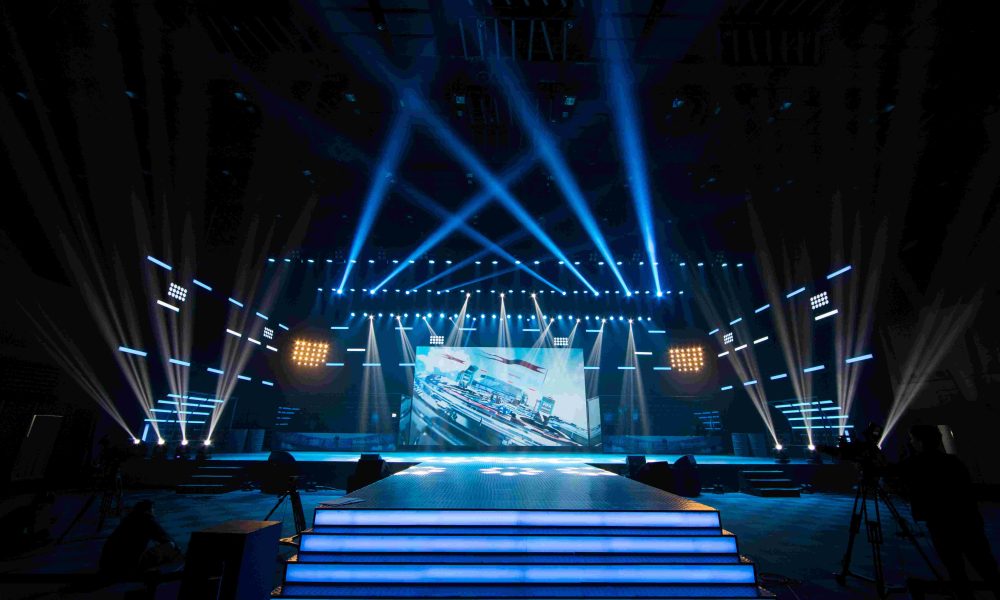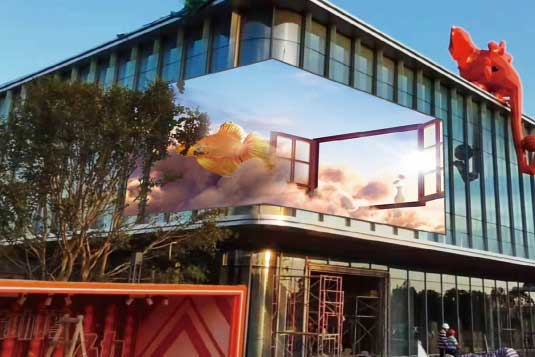Revolutionary Breakthroughs of Transparent LED Displays in Commercial Window Applications
Introduction
Transparent LED displays have emerged as a game-changer in the world of commercial window applications. These innovative displays combine the benefits of traditional signage with the aesthetic appeal of transparency, creating a unique and engaging experience for customers. This blog post will explore the revolutionary breakthroughs of transparent LED displays, their advantages, and their diverse applications in the commercial sector.
Understanding Transparent LED Displays
What are Transparent LED Displays?
-
Definition: Transparent LED displays are a type of digital display that allows light to pass through, making them see-through. They are typically composed of a grid of LEDs mounted on a transparent substrate. -
How They Work: The LEDs are spaced apart, allowing a significant amount of light to pass through, while still displaying vibrant and dynamic content.
Advantages of Transparent LED Displays
-
Enhanced Aesthetics:
-
Aesthetic Appeal: Transparent LED displays offer a sleek and modern look, blending seamlessly with the surrounding environment. They can be used to create visually stunning installations without obstructing the view. -
Example: A high-end retail store uses a transparent LED display in its storefront window to showcase promotional content while maintaining a clear view of the products inside.
-
-
Increased Visibility and Engagement:
-
Visibility: Transparent LED displays can be seen from both inside and outside the store, increasing the visibility of the displayed content. -
Engagement: Dynamic and interactive content can be displayed, attracting more attention and engagement from passersby. -
Example: A restaurant uses a transparent LED display to show menu items, special offers, and live cooking demonstrations, drawing in more customers.
-
-
Energy Efficiency:
-
Energy Savings: Transparent LED displays are energy-efficient, consuming less power compared to traditional LED displays. -
Sustainability: The lower energy consumption makes them an environmentally friendly option, aligning with sustainability goals. -
Example: A corporate office uses transparent LED displays for internal communication, reducing the need for additional lighting and saving on energy costs.
-
-
Versatility and Flexibility:
-
Versatile Installation: Transparent LED displays can be installed in various settings, including windows, glass partitions, and even as part of architectural designs. -
Flexible Content Management: They support a wide range of content types, including videos, images, and text, and can be easily updated and managed. -
Example: A museum uses transparent LED displays to provide interactive information about exhibits, enhancing the visitor experience.
-
Comparison Table: Traditional LED vs Transparent LED Displays
| Feature | Traditional LED Displays | Transparent LED Displays |
|---|---|---|
| Transparency | None | High (up to 80% transparency) |
| Aesthetics | Standard | Modern and Sleek |
| Visibility | One-sided | Two-sided |
| Engagement | Moderate | High |
| Energy Efficiency | Moderate | High |
| Installation | Versatile | Highly Versatile |
| Content Management | Flexible | Very Flexible |
Visual Representation: Energy Consumption Comparison
-
图表描述:这是一个柱状图,显示了传统LED显示屏和透明LED显示屏的能耗对比。横轴表示显示屏类型,纵轴表示能耗(单位:瓦特)。可以看到,透明LED显示屏的能耗明显低于传统LED显示屏。
Real-World Applications
-
Retail Stores:
-
Example: A luxury fashion brand uses transparent LED displays in their storefront windows to showcase new collections and promotions. The displays attract more foot traffic and enhance the overall shopping experience by providing a seamless view of the products inside.
-
-
Restaurants and Cafes:
-
Example: A trendy cafe uses a transparent LED display to show daily specials, opening hours, and upcoming events. The display also features interactive elements, such as QR codes for ordering, enhancing customer engagement and convenience.
-
-
Corporate Offices:
-
Example: A large corporation uses transparent LED displays in their lobby and meeting rooms to display company news, stock prices, and other important information. The displays blend seamlessly with the modern architecture, creating a professional and high-tech atmosphere.
-
-
Museums and Galleries:
-
Example: An art gallery uses transparent LED displays to provide detailed information about each exhibit, including artist bios, historical context, and multimedia content. The displays enhance the educational value of the exhibits and create a more immersive experience for visitors.
-
Future Trends and Innovations
-
Advancements in Transparency: Ongoing research is focused on increasing the transparency of LED displays, potentially reaching up to 90% or higher. -
Integration with Smart Technologies: Transparent LED displays are being integrated with smart technologies, such as AI and IoT, to create more interactive and personalized experiences. -
Sustainable Materials: The use of sustainable and eco-friendly materials in the production of transparent LED displays is becoming a priority, further reducing their environmental impact.
Conclusion
Transparent LED displays are revolutionizing commercial window applications with their enhanced aesthetics, increased visibility, energy efficiency, and versatility. They offer a unique and engaging way to display content while maintaining a clear view of the surroundings. As technology continues to advance, we can expect even more innovative and sustainable solutions in the future.



-800x600.jpeg)